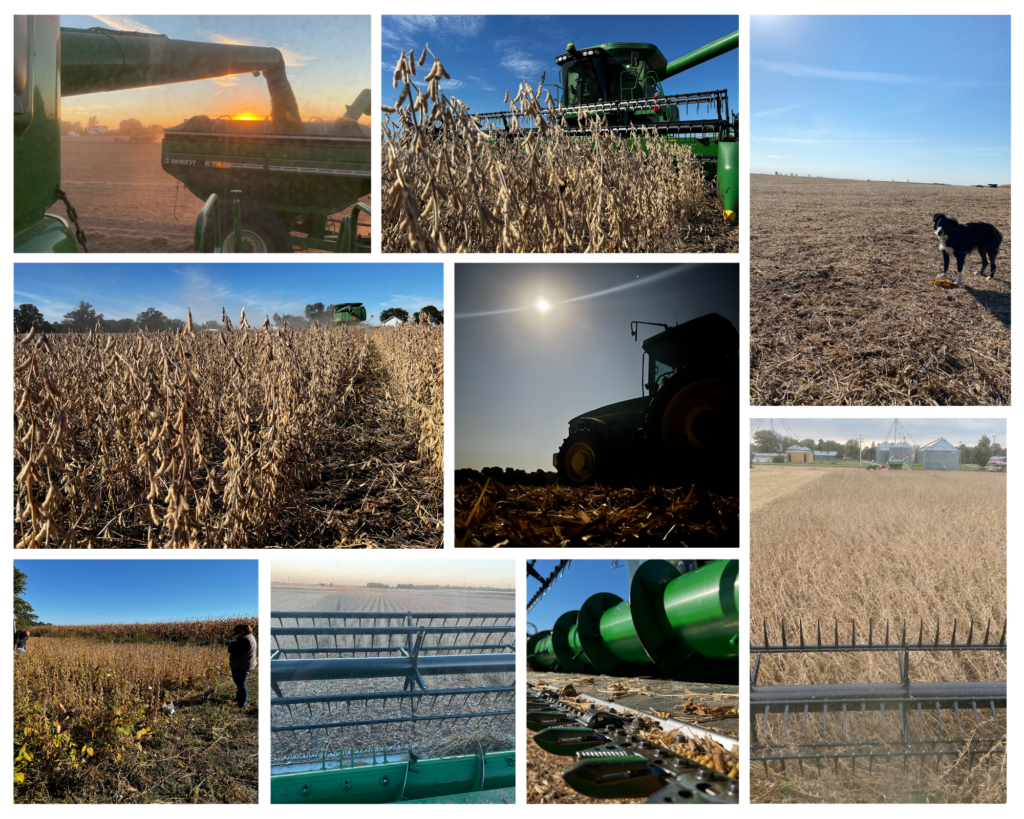Planting
Thanks to Mother Nature, early season planting was not an option for many, but it paid off for those that took the chance. The massive amount of rain in some areas caused some to consider replant. Soybean variety characteristics and management decisions such as population, seed quality, germination, emergence, vigor, and the effect of seed treatment could have affected soybean stand establishment. In some cases, spotting in soybeans was the right choice, rather than tearing up the existing stand.
Weed Pressure
Heavy rains early in the season may have rushed some to skip the pre herbicide with soil residual. With waterhemp being enemy #1, pre residuals are a must, but many had to remember that only certain products can be applied after emergence or plant injury could occur. In other instances, unfavorable environments such as heavy rains, after pre herbicide applications led to sulfentrazone injury that, in most cases, looked horrible, but did not affect soybean stands.
When it came time to apply post soil-residual herbicides, some soybean fields were experiencing drought conditions. Soil-residual herbicides that are applied as a post application require precipitation to move through the soil solutions, so they are available for uptake. Unfortunately, herbicide effectiveness is reduced when a soil-residual herbicide is sprayed on a dry surface, and this along with other factors, could have caused weeds to breakthrough and compete with the soybean crop.
Weather
The most critical time for yield loss to occur is during pod fill (R3 – R5), and factors that could cause stress are drought, excess heat, disease, pests, fertility, hail, lodging and soybean cyst nematode (SCN). Some were concerned about drought early in the season, but when rains returned in mid-August, soybean plants were able to bounce back, fill out remaining pods that survived, and yields were not too far below normal. Management practices that consisted of less tillage, increased soil residue, improved soil health, or a reduction compaction can help to increase the soil moisture content, nitrogen fixation, and soybean yield during growing seasons with drought.
Pests and Nutrients
Overall, pest pressure remained low, except for those areas with drought, which led to mite infestation as well as visual symptoms of SCN. Not only can SCN be a yield robber, but it also can be a gateway for disease such as Sudden Death Syndrome (SDS). SCN can also be easily confused with nutrient deficiencies, and with soil testing you can diagnose not only SCN, but also phosphorus (P) and potassium (K) deficiencies. However, beware of soil testing during drought conditions. You can read more on this subject here: Soil Testing In a Drought – A&L Great Lakes (algreatlakes.com)
Stem borers (Dectes) were found this year in Southern Illinois. Although they are not considered yield robbers, they can cause plants to lodge as well as hinder herbicide uptake in weeds such as cocklebur and giant ragweed. In areas where weedy hosts were found, these stem borers sometimes can move to soybeans.
Disease
In August, Sudden Death Syndrome (SDS) symptoms appeared after heavy rains in the Northern portion of Illinois, as well as in some areas of Central Illinois. Symptoms appeared especially in early planted soybeans as well as fields with compaction or poor drainage. The key this year was that most of the disease symptoms appeared late, which means that soybean yield was less likely to be affected. Although diseases like SDS and white mold are feared, they often appear in high yielding environments. Many also got the chance to evaluate seed treatments that protect against not only SDS, but also SCN.
Many questioned if they should apply a fungicide this year and, in many cases, this paid off, especially in areas where heavy rains occurred or with varieties that were susceptible to foliar fungal disease. Fungicide, disease, late season insect feeding, and potassium deficiency can all cause green stems to occur, but this year green stem appeared to be more prevalent due to a source to sink imbalance due to drought or an abnormal amount of late season rains.
Harvest
It was a long harvest with corn not drying down, which led to corn and soybeans being ready to harvest at the same time. We know that most soybean varieties have a genetic potential greater than 100 bu/A. Variety selection, planting date, drainage, soil type and agronomic decisions will all factor into this year’s soybean yield outcomes. It was quite the season with seemingly good and frequent rains as well as drought in some areas. Nevertheless, there were stresses out there that held back yield in many fields which kept them from going over 90 or 100 bushels this year, but overall Illinois soybean yields were still considered good. The question remains, will Illinois soybean yields be as good as last year?



 and then
and then